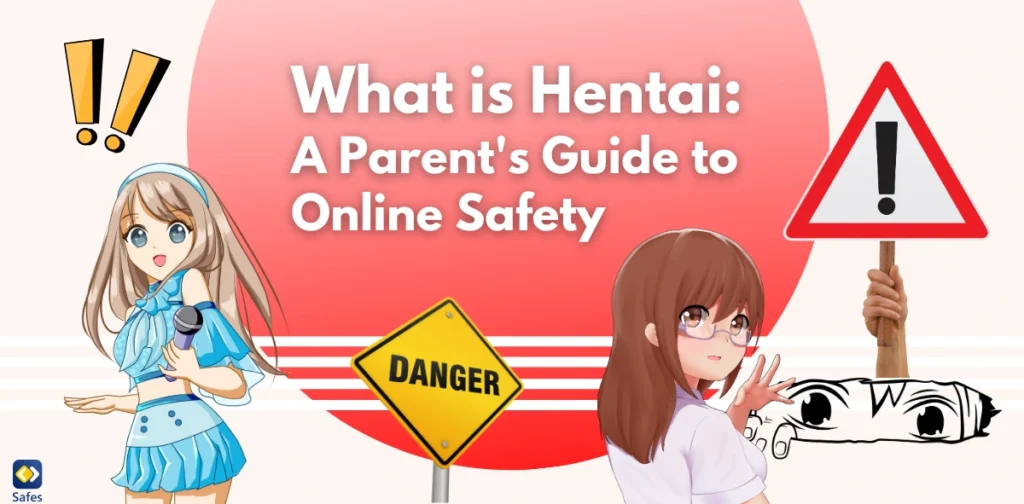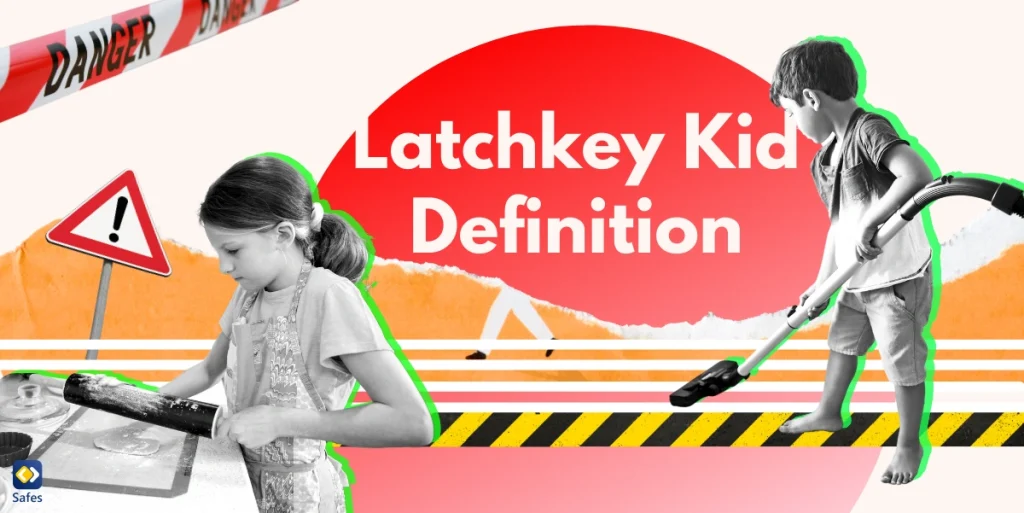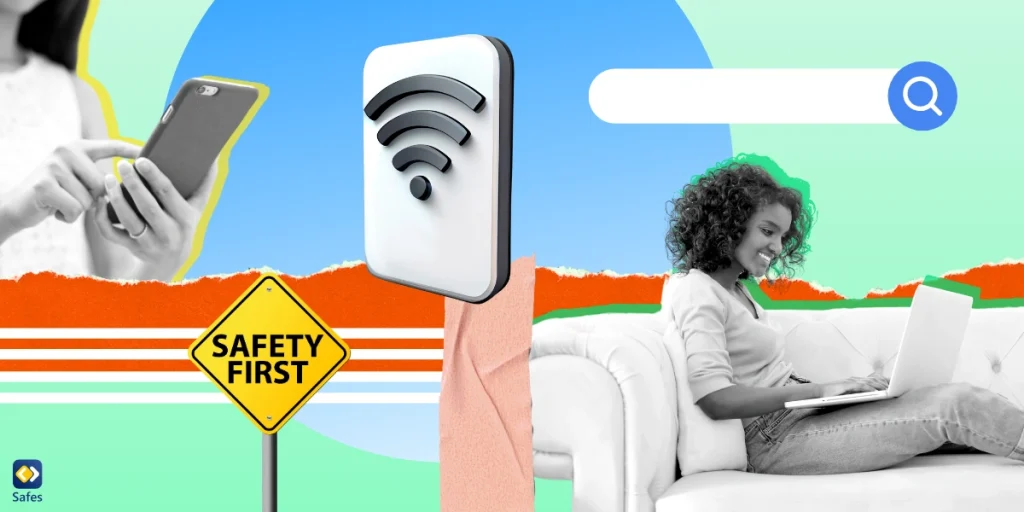Parents face numerous challenges in keeping their children safe online. One such challenge is understanding and addressing the presence of explicit content, including hentai. But what is hentai, and why should parents be concerned? This comprehensive guide will explore the world of hentai, its potential impact on children, and provide practical strategies for protecting young minds in the digital landscape.
Download and Start Your Free Trial of the Safes Parental Control App
What is Hentai: A Comprehensive Explanation
Hentai is a term that has gained significant attention in discussions about online content and child safety. But what is hentai exactly? The word “hentai” is Japanese in origin, literally translating to “perverse” or “abnormal.” In the context of media and online content, hentai refers to a genre of Japanese anime (animation) and manga (comics) that contains explicit sexual content.
Understanding what is hentai porn and how it differs from other forms of adult content is crucial for parents. Unlike live-action pornography, hentai is entirely animated or illustrated. This distinction is important because the animated nature of hentai can sometimes blur the line between fantasy and reality, especially for younger viewers who may not fully comprehend the content’s mature nature.
Hentai often features exaggerated physical characteristics, fantastical scenarios, and themes that may not be possible or legal in real-life situations. This can include a wide range of sexual acts, fetishes, and even non-consensual or violent content. The animated format allows for the depiction of scenarios that would be impossible, illegal, or unethical to produce with real actors.
The Origins and Cultural Context of Hentai
To fully grasp the issue, it’s important to understand what is hentai anime and how it relates to mainstream Japanese animation. Hentai has its roots in traditional Japanese art forms, such as shunga, which are erotic woodblock prints dating back to the Edo period (1603-1867). As anime and manga gained popularity in the 20th century, adult-oriented content evolved alongside mainstream entertainment.
It’s worth noting that in Japan, the term “hentai” is not commonly used to describe this type of content. Instead, terms like “ero anime” or “seijin anime” (adult anime) are more prevalent. The widespread use of “hentai” in Western countries to describe Japanese animated pornography is largely a result of how the content was marketed and distributed internationally.
Hentai, what is it in the context of modern digital culture? Today, hentai has become a global phenomenon, easily accessible through various online platforms. This accessibility has raised concerns among parents and educators about its potential impact on young people’s understanding of sex, relationships, and consent.

Is Hentai Harmful for Children?
When considering online risks, many parents ask: is hentai bad for children’s development? The answer is not straightforward, but there are several important factors to consider.
- Unrealistic Expectations: Hentai often portrays unrealistic body standards and sexual scenarios. This can lead to distorted views of sex and relationships, especially for young people who lack real-world experience.
- Normalization of Extreme Content: Some hentai includes themes of non-consent, violence, or extreme fetishes. Exposure to such content can normalize harmful behaviors or attitudes towards sex and relationships.
- Addiction and Compulsive Behavior: Like other forms of pornography, hentai can be addictive. Young people may develop compulsive viewing habits that interfere with their daily lives and healthy sexual development.
- Legal Concerns: Some forms of hentai depict characters who appear underage, which can be illegal in many countries, even if the characters are fictional.
- Emotional and Psychological Impact: Exposure to explicit sexual content at a young age can be confusing and distressing for children, potentially affecting their emotional well-being and attitudes towards sex.
Research has shown that early exposure to pornography, including hentai, can have significant impacts on child development. A study published in the Journal of Adolescence found that exposure to sexually explicit internet material was associated with more permissive sexual attitudes and gender-stereotypical sexual beliefs [].
It’s important to note that not all anime is hentai, and not all anime is inherently bad for kids. Many anime series are appropriate for children and can be educational and entertaining. The key is to understand the content and make informed decisions about what is suitable for your child’s age and maturity level.
How to Protect Children from Hentai
Protecting children from hentai and other inappropriate online content requires a multi-faceted approach. Here are some effective strategies parents can employ:
- Open Communication: Establish an open dialogue with your children about online safety and the types of content they might encounter. Create an environment where they feel comfortable coming to you with questions or concerns.
- Education: Teach children about healthy relationships, consent, and the differences between fantasy and reality. This foundation can help them critically evaluate the content they encounter online.
- Parental Controls: Implement parental controls on devices and networks to filter out explicit content. While not foolproof, these tools can significantly reduce the risk of accidental exposure.
- Supervised Online Activity: For younger children, ensure that online activities are supervised. This can include setting up computers in common areas of the home and regularly checking browsing history.
- Age-Appropriate Content: Encourage the use of age-appropriate platforms and content. Many streaming services and online platforms offer child-friendly versions with curated content.
Technical Solutions: How to Block Hentai
Learning how to block hentai effectively is an essential skill for parents in the digital age. Here are some technical solutions to consider:
- Network-Level Filtering: Use OpenDNS or similar services to filter content at the router level, protecting all devices on your home network.
- Device-Specific Controls: Enable built-in parental controls on devices. For example:
- iOS: Use Screen Time settings
- Android: Set up Family Link
- Windows: Configure Microsoft Family Safety
- macOS: Use Parental Controls in System Preferences
- Browser Extensions: Install browser extensions that block adult content. Examples include BlockSite and Adult Block.
- Search Engine SafeSearch: Enable SafeSearch on Google, Bing, and other search engines to filter explicit results.
- Streaming Platform Restrictions: Set up restrictions on streaming platforms like YouTube, Netflix, and Hulu to prevent access to mature content.
For more comprehensive strategies on blocking inappropriate content, including hentai, check out our guide on how to block porn.
It’s also worth noting that hentai content can sometimes be found in unexpected places, such as gaming platforms. If your child uses Steam, for instance, you might want to learn how to hide adult games on Steam to ensure they don’t accidentally access inappropriate content.
The Role of Communication in Online Safety
While technical solutions are important, they should be complemented by open and honest communication with your children. Here are some tips for discussing online safety and sensitive topics like hentai:
- Start Early: Begin age-appropriate conversations about online safety from an early age.
- Be Non-Judgmental: Create a safe space where children feel comfortable sharing their online experiences without fear of punishment.
- Stay Informed: Keep yourself updated about online trends and the types of content your children might encounter.
- Set Clear Boundaries: Establish clear rules about internet usage, including what types of content are off-limits.
- Lead by Example: Model healthy online behavior and respect for digital boundaries.
Remember, the goal is not just to block access to hentai or other inappropriate content, but to help children develop the critical thinking skills they need to navigate the online world safely and responsibly.
Introducing Safes: A Comprehensive Solution for Online Safety
As we’ve explored the complexities of protecting children from hentai and other online risks, it’s clear that parents need robust tools to support their efforts. This is where Safes, our parental control app, comes in to provide a comprehensive solution for online safety.
Safes offers a range of features designed to give parents peace of mind while allowing children to explore the internet safely:
- Content Filtering: Automatically block access to hentai and other inappropriate content across devices.
- Screen Time Management: Set healthy limits on device usage and specific apps.
- Location Tracking: Keep track of your child’s whereabouts for added safety.
- Activity Reports: Get insights into your child’s online activities to facilitate open discussions.
- Cross-Platform Support: Protect your child across multiple devices and operating systems.
By combining these powerful features with the communication strategies we’ve discussed, parents can create a safer online environment for their children. We invite you to try Safes’s free trial by downloading the app on your Android or iOS device. Experience firsthand how Safes can support your family’s digital well-being and protect your children from online risks like hentai.
Conclusion
Understanding what is hentai and its potential impact on children is crucial for parents. While hentai and other forms of explicit online content pose significant challenges, there are many effective strategies and tools available to protect young minds.
By combining open communication, education, and technical solutions like content filtering and parental control apps, parents can create a safer online environment for their children. Remember, the goal is not just to block access to inappropriate content, but to empower children with the knowledge and skills they need to navigate the digital world responsibly.
Stay informed, stay engaged, and don’t hesitate to seek support when needed. With the right approach and tools like Safes, you can help your children enjoy the benefits of the internet while minimizing the risks.
Your Child’s Online Safety Starts Here
Every parent today needs a solution to manage screen time and keep their child safe online.
Without the right tools, digital risks and excessive screen time can impact children's well-being. Safes helps parents set healthy boundaries, monitor activity, and protect kids from online dangers—all with an easy-to-use app.
Take control of your child’s digital world. Learn more about Safes or download the app to start your free trial today!




